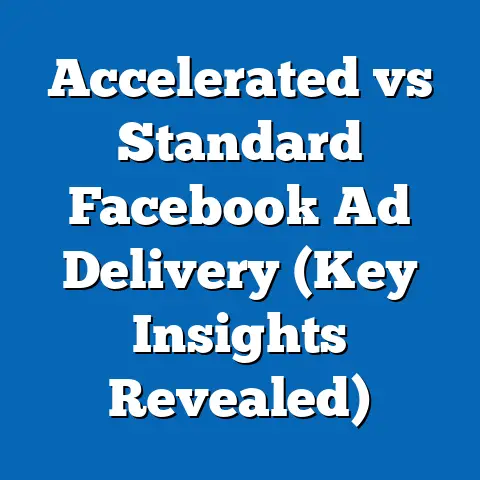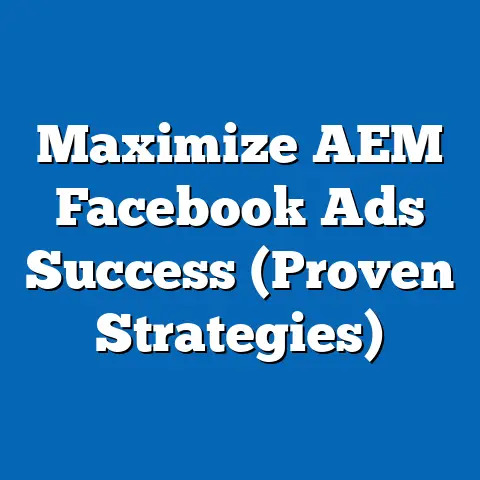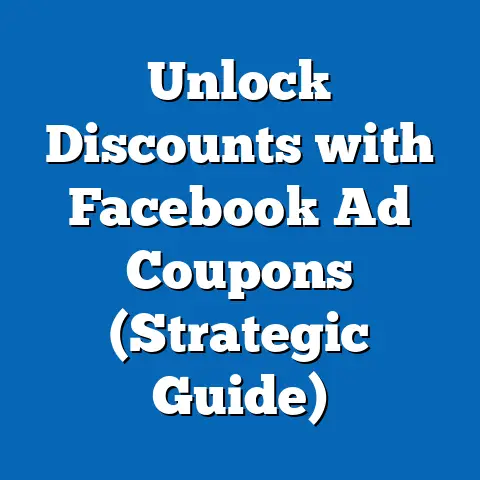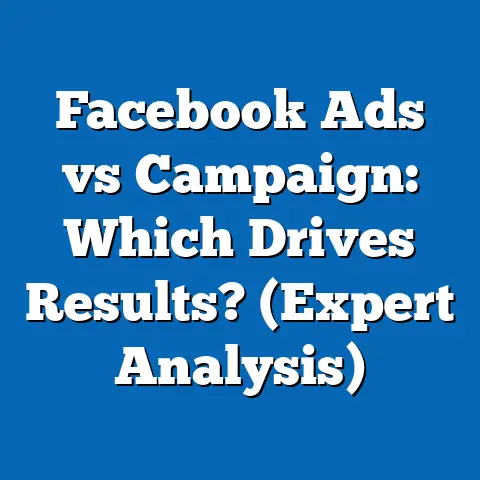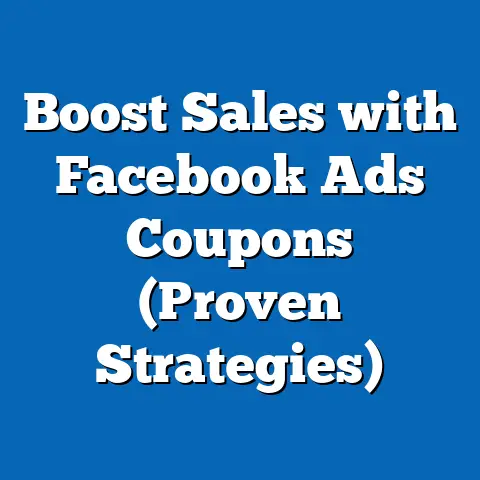Share Facebook Ad Set (Unlock Effective Strategies)
Are you tired of throwing money at Facebook ads and seeing little to no return? Do you feel like you’re constantly tweaking campaigns, chasing elusive results? I’ve been there. I remember one particularly frustrating campaign where I felt like I was just burning cash with no clear path to success. The problem? I wasn’t fully leveraging the power of Facebook ad sets.
Understanding Facebook Ad Sets
At its core, a Facebook ad set is a container for your ads. Think of it as a control center where you define who sees your ads, how much you spend to reach them, where your ads are shown, and how Facebook optimizes your campaign. It’s the critical link between your overall campaign objective and the individual ads you create.
An ad set comprises several key components:
- Targeting: Defining your ideal audience based on demographics, interests, behaviors, and connections.
- Budget & Schedule: Setting a daily or lifetime budget and defining the dates and times your ads will run.
- Placements: Choosing where your ads will appear, such as Facebook News Feed, Instagram Feed, Audience Network, and Messenger.
- Optimization & Delivery: Telling Facebook what you want to achieve (e.g., link clicks, conversions, impressions) and how to optimize your ad delivery to reach that goal.
Each campaign can have multiple ad sets, allowing you to test different audiences, budgets, and placements without affecting each other. This is a crucial aspect of effective advertising, as it allows for granular control and optimization.
The importance of ad sets lies in their ability to deliver highly targeted messages to specific audience segments. Instead of broadcasting your message to everyone on Facebook, you can tailor your ads to resonate with people who are most likely to be interested in your products or services. This leads to higher engagement, improved conversion rates, and a better return on your advertising investment.
Key Takeaway: Facebook ad sets are the foundation of targeted and efficient advertising. Understanding their components is crucial for campaign success.
The Importance of Targeting in Ad Sets
Imagine trying to sell winter coats to people living in the tropics. Sounds ridiculous, right? That’s essentially what you’re doing if you don’t prioritize audience targeting in your ad sets. Targeting is arguably the most critical aspect of Facebook advertising, as it determines who sees your ads and, ultimately, whether your campaign succeeds or fails.
Facebook offers a wealth of targeting options, allowing you to reach incredibly specific audiences. Here’s a breakdown of some of the most important:
- Demographics: Target users based on age, gender, education, relationship status, job title, and more. This is foundational targeting and helps narrow your audience to the most relevant groups.
- Interests: Reach people based on their declared interests, hobbies, and the pages they’ve liked. This allows you to connect with users who are passionate about specific topics related to your business. For example, if you sell hiking gear, you might target people interested in “hiking,” “camping,” or “outdoor adventures.”
- Behaviors: Target users based on their past online and offline behaviors, such as purchase history, device usage, travel habits, and more. This data is incredibly powerful, as it allows you to reach people who have demonstrated a specific interest or need for your products or services.
- Custom Audiences: This is where things get really interesting. Custom audiences allow you to upload your own data (e.g., email lists, website visitors) to create highly targeted audiences. For example, you can create a custom audience of people who have visited your website in the past 30 days and show them ads for products they viewed.
- Lookalike Audiences: Leverage your existing custom audiences to find new people who are similar to your best customers. Facebook analyzes the characteristics of your custom audience and identifies users who share similar traits. This is a fantastic way to expand your reach and find new potential customers.
I’ve seen firsthand how effective targeting can transform a failing campaign. I once worked with a local bakery that was struggling to attract new customers. Their initial Facebook ads were broad and untargeted, resulting in low engagement and minimal sales. By creating a custom audience of people who had previously visited their website and a lookalike audience based on that group, we were able to dramatically improve their ad performance. We targeted people who had shown interest in their products and, as a result, saw a significant increase in website traffic, in-store visits, and overall sales.
Key Takeaway: Audience targeting is paramount to Facebook advertising success. Utilize Facebook’s diverse targeting options to reach the right people with the right message. Don’t be afraid to experiment with different combinations to find what works best for your business.
Budgeting and Bidding Strategies
Setting the right budget and choosing the appropriate bidding strategy are critical for maximizing your ROI on Facebook ads. It’s a delicate balance between spending enough to reach your target audience and avoiding overspending on ineffective campaigns.
Facebook offers two primary budgeting options:
- Daily Budget: Sets a fixed amount you’re willing to spend each day. This is a good option for campaigns that run continuously and allows you to control your daily ad spend.
- Lifetime Budget: Sets a total amount you’re willing to spend over the entire duration of your campaign. This is ideal for campaigns with a specific end date, such as a product launch or a limited-time promotion.
Choosing between daily and lifetime budgets depends on your campaign goals and your comfort level with managing your ad spend. If you’re new to Facebook advertising, I recommend starting with a daily budget to gain a better understanding of how your ads are performing.
Facebook also offers a variety of bidding strategies, each designed to optimize your campaign for different objectives:
- Highest Volume: (Previously known as Lowest Cost) Facebook automatically bids to get you the most results for your budget. This is a good option for beginners or campaigns with a clear conversion goal.
- Cost Per Result Goal: (Previously known as Target Cost) You set a target cost per result (e.g., cost per lead, cost per purchase), and Facebook tries to achieve that target. This is useful when you have a specific cost target in mind.
- Value Optimization: Facebook bids to maximize the value of your conversions. This is best suited for businesses with e-commerce stores and the ability to track the value of each purchase.
- Manual Bidding: You manually set your bids for each auction. This gives you the most control over your bidding strategy but requires a deeper understanding of Facebook’s auction system.
Choosing the right bidding strategy depends on your campaign goals and your level of expertise. For most businesses, the Highest Volume or Cost Per Result Goal strategies are a good starting point.
One of the biggest mistakes I see advertisers make is setting their budget and forgetting about it. Effective budget management requires continuous monitoring and adjustments. If you’re seeing good results, consider increasing your budget to reach a wider audience. Conversely, if your ads are underperforming, you may need to reduce your budget or pause the campaign altogether.
Key Takeaway: Choose your budgeting and bidding strategies carefully based on your campaign goals and your level of expertise. Continuously monitor your ad performance and adjust your budget accordingly to maximize your ROI.
Ad Placement Strategies
Where your ads appear on Facebook can have a significant impact on their performance. Facebook offers a variety of ad placements, each with its own unique characteristics and audience.
The main ad placements include:
- Facebook News Feed: Ads appear directly in users’ news feeds alongside posts from friends, family, and pages they follow. This is the most popular and often most effective placement.
- Instagram Feed: Ads appear in users’ Instagram feeds, similar to the Facebook News Feed. This is a great option for visually appealing ads targeting a younger audience.
- Facebook Marketplace: Ads appear in the Facebook Marketplace, a platform for buying and selling goods. This is ideal for businesses selling products locally.
- Facebook Video Feeds: Ads appear in video feeds on Facebook, such as Facebook Watch. This is a good option for video ads targeting engaged viewers.
- Instagram Explore: Ads appear in the Instagram Explore section, which is where users discover new content. This is a good option for reaching new audiences with visually appealing ads.
- Messenger Inbox: Ads appear in users’ Messenger inboxes. This is a more direct and personal placement, but it can also be perceived as intrusive if not done well.
- Audience Network: Ads appear on websites and apps outside of Facebook. This allows you to expand your reach beyond Facebook’s platform.
Facebook offers two options for managing your ad placements:
- Automatic Placements: Facebook automatically chooses the best placements for your ads based on your campaign goals and budget. This is a good option for beginners, as it simplifies the process and allows Facebook to optimize your ad delivery.
- Manual Placements: You manually choose the placements where you want your ads to appear. This gives you more control over your ad delivery but requires a deeper understanding of each placement’s characteristics.
I generally recommend starting with automatic placements to allow Facebook to optimize your ad delivery. Once you’ve gathered enough data, you can analyze your ad performance by placement and identify the most effective ones. Then, you can switch to manual placements and focus your efforts on those high-performing placements.
It’s important to tailor your ads to each placement. What works well in the Facebook News Feed may not work as well in the Instagram Feed or the Audience Network. Consider the platform’s audience, the context in which your ads will appear, and the type of content that typically performs well on that platform.
Key Takeaway: Experiment with different ad placements to find the ones that work best for your business. Tailor your ads to each placement to maximize their impact.
Optimization Techniques for Ad Sets
Optimization is an ongoing process that involves continuously monitoring your ad performance and making adjustments to improve your results. It’s not a “set it and forget it” approach. The Facebook advertising landscape is constantly evolving, so it’s crucial to stay on top of the latest trends and best practices.
One of the most important optimization techniques is A/B testing. A/B testing involves creating multiple versions of your ads with slight variations (e.g., different headlines, images, call-to-actions) and running them simultaneously to see which performs best. This allows you to identify the most effective ad elements and optimize your campaigns accordingly.
When A/B testing, it’s important to test only one element at a time. If you change multiple elements simultaneously, it’s difficult to determine which change caused the improvement or decline in performance.
Another critical aspect of optimization is monitoring your ad performance metrics. Facebook provides a wealth of data about your ad performance, including:
- Reach: The number of unique people who saw your ads.
- Impressions: The number of times your ads were displayed.
- Click-Through Rate (CTR): The percentage of people who clicked on your ads after seeing them.
- Cost Per Click (CPC): The average cost you paid for each click on your ads.
- Conversion Rate: The percentage of people who completed a desired action (e.g., made a purchase, filled out a form) after clicking on your ads.
- Return on Ad Spend (ROAS): The amount of revenue you generated for every dollar you spent on ads.
By tracking these metrics, you can identify areas for improvement and make data-driven decisions about your ad campaigns. For example, if your CTR is low, you may need to improve your ad copy or creative. If your conversion rate is low, you may need to optimize your landing page or your offer.
I’ve found that setting up custom dashboards in Facebook Ads Manager is incredibly helpful for monitoring key metrics. This allows you to quickly identify trends and anomalies and take action accordingly.
Key Takeaway: Optimization is an ongoing process. Use A/B testing to identify the most effective ad elements and continuously monitor your ad performance metrics to make data-driven decisions.
Real-World Case Studies
Let’s look at a real-world example of how mastering Facebook ad sets can lead to success. A local e-commerce store selling handmade jewelry was struggling to reach new customers and increase sales. They had tried Facebook advertising in the past but hadn’t seen much success.
Their initial campaigns were poorly targeted, with broad demographics and vague interests. They were also using automatic placements, which meant their ads were appearing in a variety of locations, many of which were irrelevant to their target audience.
I worked with them to revamp their Facebook advertising strategy, focusing on the following:
- Targeting: We created a custom audience of people who had previously visited their website and a lookalike audience based on that group. We also targeted people interested in “handmade jewelry,” “fashion accessories,” and “gifts for her.”
- Budgeting: We set a daily budget and used the Cost Per Result Goal bidding strategy, targeting a specific cost per purchase.
- Placements: We initially used automatic placements but quickly analyzed the data and identified the Facebook News Feed and Instagram Feed as the most effective placements. We then switched to manual placements and focused our efforts on those two placements.
- Optimization: We A/B tested different ad creatives and copy, focusing on highlighting the unique craftsmanship and the story behind their jewelry.
Within a few weeks, they saw a significant increase in website traffic, engagement, and sales. Their conversion rate improved by 50%, and their ROAS increased by 3x. By mastering Facebook ad sets and focusing on targeted messaging, efficient budgeting, and continuous optimization, they were able to transform their Facebook advertising from a cost center into a profit center.
Key Takeaway: This case study highlights the importance of targeted messaging, efficient budgeting, and continuous optimization in achieving Facebook advertising success.
Conclusion
Mastering Facebook ad sets is essential for achieving your advertising goals. By understanding the components of an ad set, prioritizing audience targeting, choosing the right budgeting and bidding strategies, optimizing your ad placements, and continuously monitoring your ad performance, you can unlock the true potential of your Facebook ad campaigns.
Don’t be afraid to experiment, test different approaches, and learn from your mistakes. The Facebook advertising landscape is constantly evolving, so it’s crucial to stay curious, stay informed, and stay adaptable.
So, are you ready to unlock the potential of your Facebook ad campaigns? Take the strategies discussed in this guide and apply them to your own business. I’m confident that you’ll see a significant improvement in your results. Good luck!

